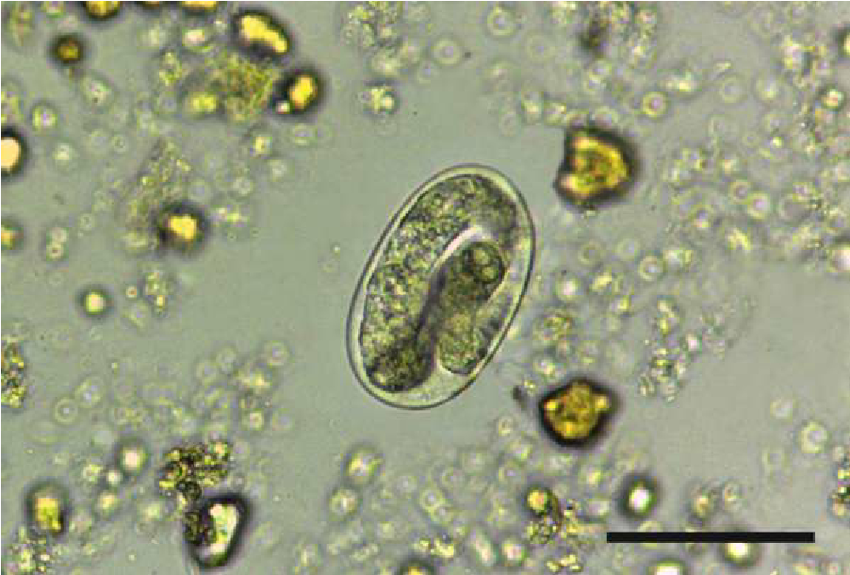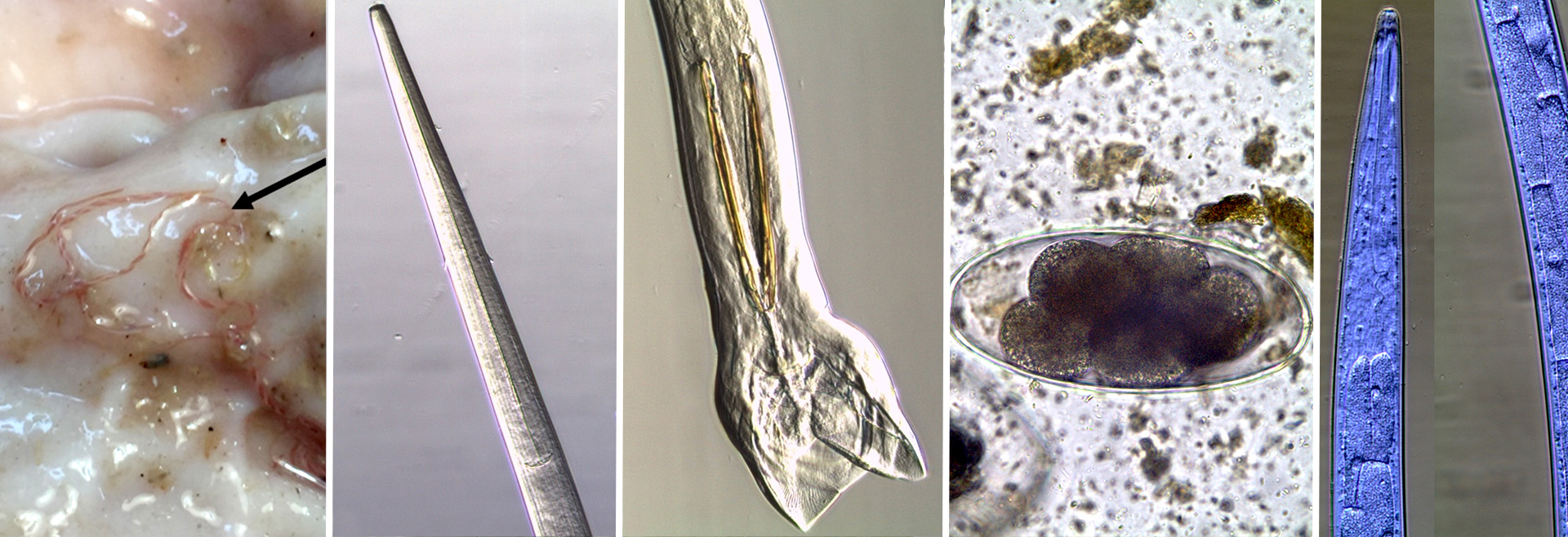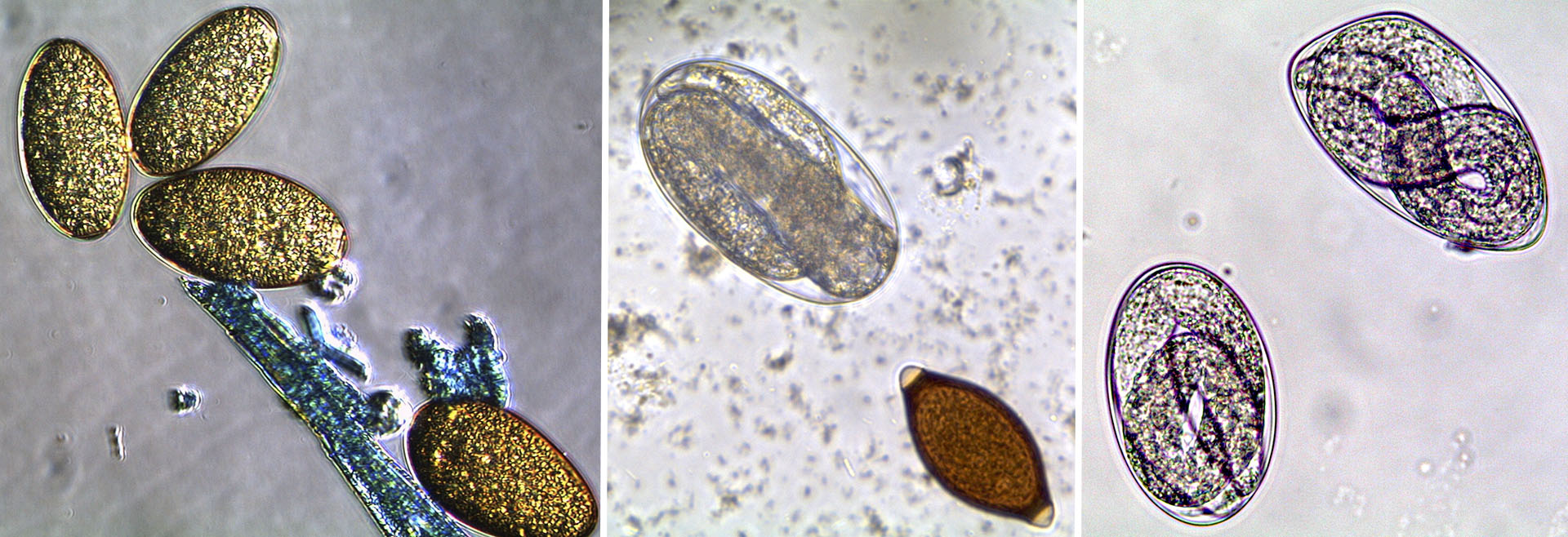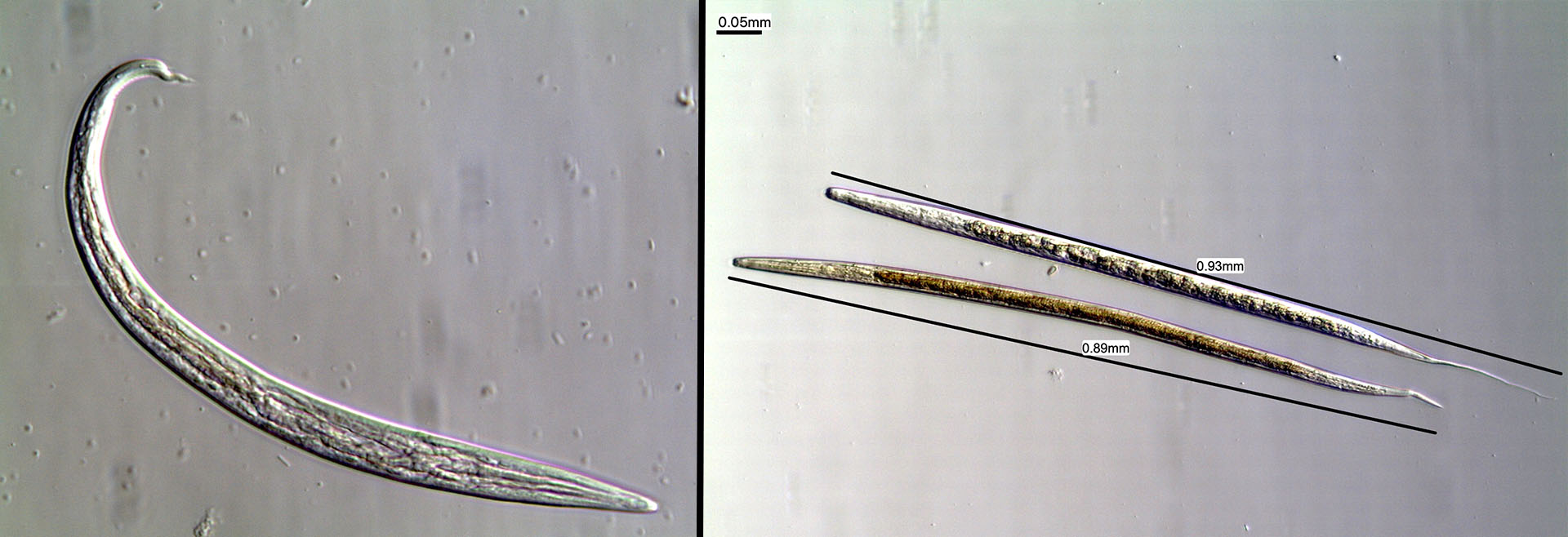
Nematodes of the genus Strongyloides belong to the order Rhabditida. Adult parasites are found in the mucosa of the small intestine and are characterized by the presence of a rhabditiform oesophagus. The eggs of Strongyloides papillosus, the species commonly found in ruminants, are small (47-65 µm long by 25-26 µm wide), thin-housed, have flattened poles, and contain an L1 larva when shed. These parasites have a free and a parasitic life cycle. In the parasitic life cycle, the infective L3 larvae present in soil or animal bedding penetrate the skin of the host or are ingested with contaminated pasture, food or water and undertake migrations through blood vessels, lungs, trachea and mouth until reaching the small intestine, where they mature into parthenogenetic, egg-producing adult females.
In the free-living cycle, the L3 larvae develop into adult males and females in the environment, and reproduce sexually resulting in egg production and consequent development of infective L3 larvae. High temperature and humidity conditions accelerate egg development in the soil, leading to infective larvae in only 28 hours, thus promoting continuous infection. Lambs can also become infected through milk or colostrum by reactivation of L3 larvae embedded in the tissues of the mothers after birth. Infections in sheep are usually mild and asymptomatic, with disease occurring only in massive infections and usually in new born animals infected by the trans mammary route.
Clinical signs include diarrhoea (often accompanied by blood and mucus), dehydration, anorexia, listlessness, and mild to moderate anaemia.
The blue bar represents the percentage of stool samples positive for eggs and the orange bar represents the percentage of negative stool samples.
The box-plot shows the results obtained in the White Merino and Black Merino sheep. The horizontal line dividing the box indicates the median value of eggs per gram of faeces (OPG) observed, the lower line the minimum value, and the upper line the maximum value. Outliers are represented by a circle.


















